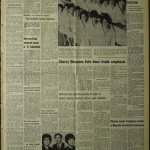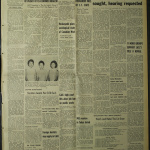Concentration Camps, U.S.A. (book)
| Title | Concentration Camps, U.S.A. |
|---|---|
| Author | Charles R. Allen, Jr. |
| Original Publication Date | 1966 |
| Pages | 60 pages |
Concentration Camps, U.S.A. is a sixty page booklet by Charles R. Allen, Jr. that was published in 1966. Built around the author's visits to five of the camps designated for use under the auspices of the Emergency Detention Act, Title II of the Internal Security Act of 1950—one of which was Tule Lake —the booklet warned of the threat to civil liberties the camps represented, explicitly raising the possibility that anti-war or civil rights protesters could be incarcerated in them. The booklet was embraced by activists intent on repealing Title II , an effort that was ultimately successful and that was a precursor of the Redress Movement .
According to its inside front cover, the booklet was commissioned by the Citizens Committee for Constitutional Liberties, a group that "works for constitutional liberties, primarily through the nullification and repeal of the McCarran Internal Security Act of 1950, which is the extension and legal arm of mccarthyism. (sic)" The author, who was best known for his work on Nazi war criminals in the U.S., was a journalist and editor at The Nation and who had written a series of articles on the Title II detention camps in 1952 for The New Statesman . [1]
Allen begins by recounting the history of Title II and the reaction to it—including the construction of the six camps and preparations of custodial detention lists—before summarizing his earlier articles based on his visit to the Allenwood, Pennsylvania, site. Allenwood was a former TNT manufacturing and storage camp during WWII that was then being repurposed as a concentration camp. Allen goes on to interview staff of the facility and those living in the area around the camp.
The core of the booklet is made up of Allen's accounts of visits to five of the sites fourteen years later, in 1966. He finds the Allenwood, El Reno, Oklahoma, and Florence, Arizona, camps still in use as prison facilities, while the Florence, Arizona and Tule Lake, California sites were not in use as detention facilities. (He found that some barracks at Tule Lake had been repurposed as migrant labor housing.) He again interviews both staff members at the facilities and residents of the surrounding communities. He finds that most of the prison employees knew of the camps' status as Title II detention camps that could still be activated, that they generally disapproved of Title II, and that they generally hadn't made any plans should Title II be implemented. After the accounts of his visits, Allen is rebuffed in his attempts to interview anyone with the FBI and goes on to describe governmental plans for "Operation Dragnet," a plan to incarcerate alleged Communist, anti-war activists, "militants of the civil rights movement," and other dissidents.
Historians Masami Izumi and Alice Yang Murray both credit the booklet with raising awareness about the custodial detention provisions of Title II leading to the movement to overturn Title II. The latter reported that the Berkeley Asian American Political Alliance distributed the booklet while starting a petition drive to repeal Title II. [2]
Find in the Digital Library of Japanese American Incarceration
This item has been made freely available in the Digital Library of Japanese American Incarceration , a collaborative project with Internet Archive .
For More Information
Allen, Charles R., Jr. Concentration Camps U.S.A. New York: Marzani & Munsell, Inc. 1966.
Footnotes
- ↑ "A Tribute to Charles R. Allen, Jr., Remember the Women Institute website, accessed on Nov. 30, 2012.
- ↑ Masami Izumi, "Prohibiting 'American Concentration Camps': Repeal of the Emergency Detention Act and the Public Historical Memory of the Japanese American Internment," Pacific Historical Review 74.2 (May 2005), 171; Alice Yang Murray, Historical Memories of the Japanese American Internment and the Struggle for Redress (Stanford: Stanford University Press, 2008), 252, 255.
Last updated Dec. 18, 2023, 6:35 p.m..








